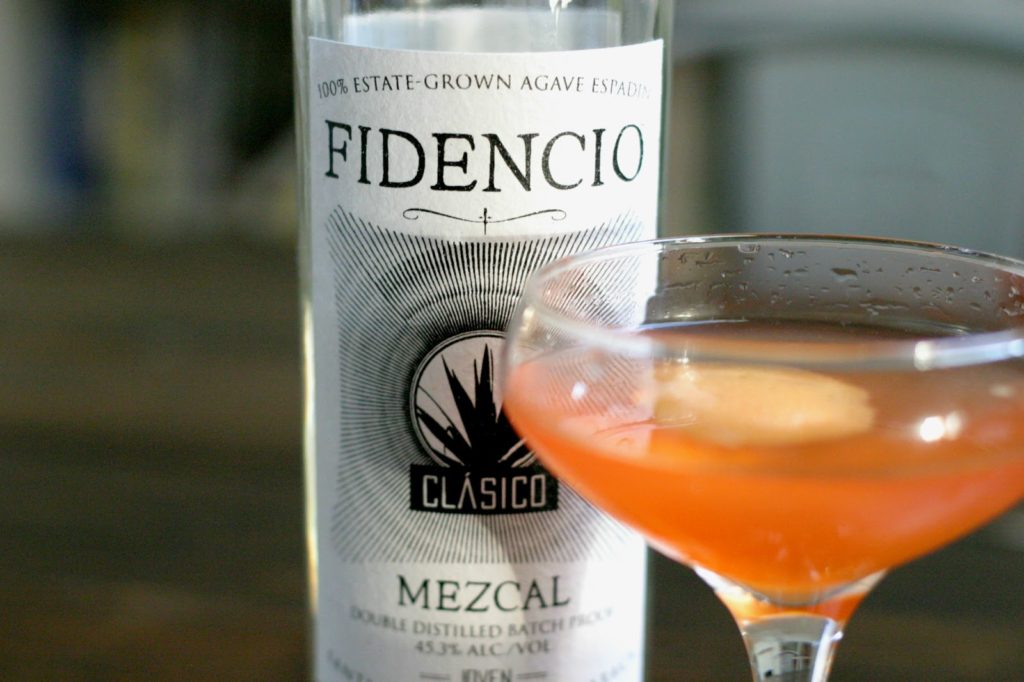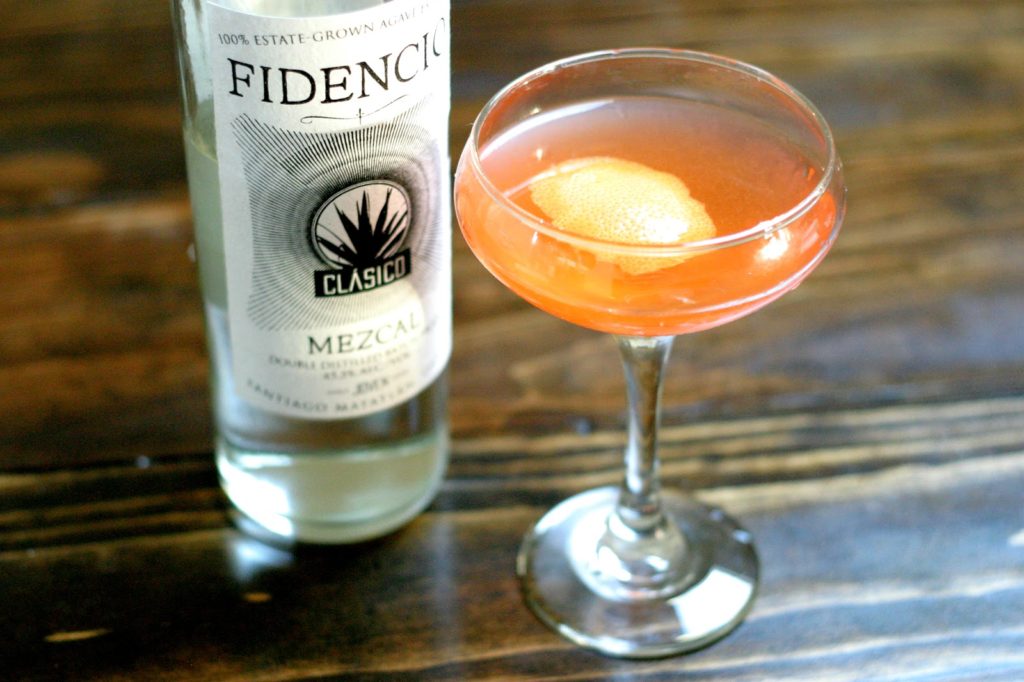Mezcal is currently one of my favorite spirits. Just about every cocktail bar you go to will have a mezcal cocktail on the menu these days, and I can rarely resist trying them. Bartenders are dishing out everything from Old Fashioneds to Last Words with mezcal in place of the usual main ingredient. When I was in Denver last week, I went to the fabulous Green Russell and had their Oaxacan Velvet: mezcal, Yellow Chartreuse, lime juice, strawberry balsamic syrup, and cava (they actually used Del Maguey Crema de Mezcal, which is bit unique). Champagne cocktail + mezcal = GarnishGirl heaven.
You may remember from my post on tequila that mezcal is not a type of tequila; it’s actually the other way around. Mezcal is a word for any spirit made from agave. Tequila is specifically made from blue agave (Agave tequiliana), whereas mezcal is made from a number of different species and varieties that can even be mixed within a single bottle. The most common is the Oaxacan variety called Espadin, Agave angustifolia. In addition to these different varieties, mezcal also comes in the same four age categories as tequila (blanco/plata, reposado, anejo, super anejo), except that the unaged or barely-aged blanco or plata variety is referred to as joven (“young”).
Mezcal is also the stuff that sometimes has a worm in the bottle. Actually, please forgive a biologist for geeking on you for a moment: it’s not actually a worm, but a larva. And there are two different species that are commonly used, white and red. The white “worm” is a larva of Aegiale hesperiaris, a butterfly known as the Tequila Giant Skipper, and the red is a larva of Comadia redtenbacheri, a moth without any common name I can find – as a larva, it’s known as the Agave Redworm. (That’s probably as many scientific names as I’ll ever be able to fit into a post about liquor.) Anyway, both of these species are actually pests that infect the Maguey plant, and putting them in mezcal is not some long-time Mexican tradition. It was actually started as a marketing ploy, and only used by makers of cheap, bad mezcal. If you ever see a bottle with a worm in it, don’t waste your money.
The taste of Mezcal is intense and smoky. It’s kind of like drinking a cigar. Every time I have some, I’m reminded of an episode from the first season of New Girl in which Jake Johnson visits the study of a character played by Dylan McDermott and says: “It smells like leather, and Teddy Roosevelt, and wistfulness. It smells like Shakespeare, if Shakespeare were a damn cowboy. And a hawk’s nest, and boat fuel, and cigars… man stuff.” This is exactly how mezcal tastes.
If this description appeals to you, then you probably don’t need much more convincing that a bottle of mezcal is a worthy addition to your bar. If you’re still a bit skeptical, it’s worth trying a mezcal cocktail next time you get a chance. Some of my favorite cocktails that use it – like the one below – pair it with enough citrus and sweetness that the smoky taste is far from overwhelming. But it adds incredible dimensionality to a cocktail. The brand I currently have is Fidencio, but Del Maguey is also very good and is cheaper. Another I see on a lot of menus is Sombra.
Mezcal
Price: $30 and up
Alcohol Content: Around 45%
Popular Cocktails: My current favorites include the Division Bell, Maximilian Affair, and Maguey Sour.
I have trouble choosing a favorite mezcal cocktail, but this one ought to be a pretty good crowd pleaser and introduction to the spirit.
History: The Division Bell was created by Phil Ward for Mayahuel in Manhattan. It was named after the Pink Floyd album he was listening to at the time.
Division Bell
1 oz. mezcal
3/4 oz. Aperol
3/4 oz. lime juice
1/2 oz. maraschino liqueur
Combine ingredients in a shaker. Add ice and shake until chilled. Strain into a coupe glass and garnish with a grapefruit twist if you have one – it really brings out the grapefruit notes in the cocktail. If not, a lemon twist will do.
Recipe from cocktail virgin slut.







